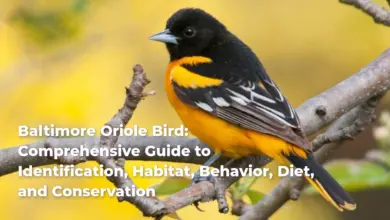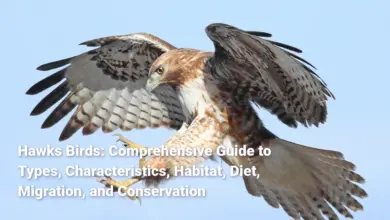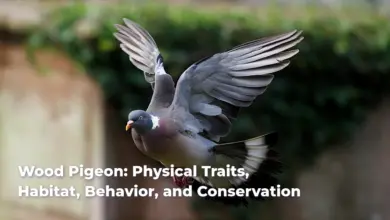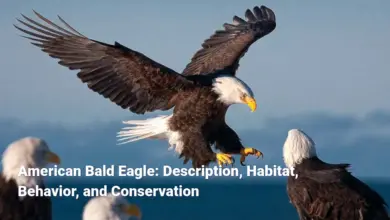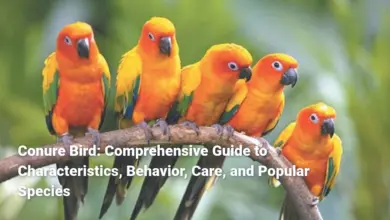Black Duck: Exploring Its Ecological Significance and Cultural Impact
A Comprehensive Look at the Black Duck's Role in Ecosystems, Its Conservation Challenges, and Its Influence in Culture and Folklore.
The American Black Duck (Anas rubripes) is much more than just a dark-hued waterfowl; it holds significant ecological importance across various regions, particularly in North America. These fascinating birds inhabit a range of wetland environments, serving as vital indicators of ecosystem health. Their presence is a testament to the vitality of wetlands a crucial resource for countless species, including humans. Black ducks are known for their distinctive behaviors, diet, and social structures, making them an intriguing subject for both wildlife enthusiasts and casual observers.
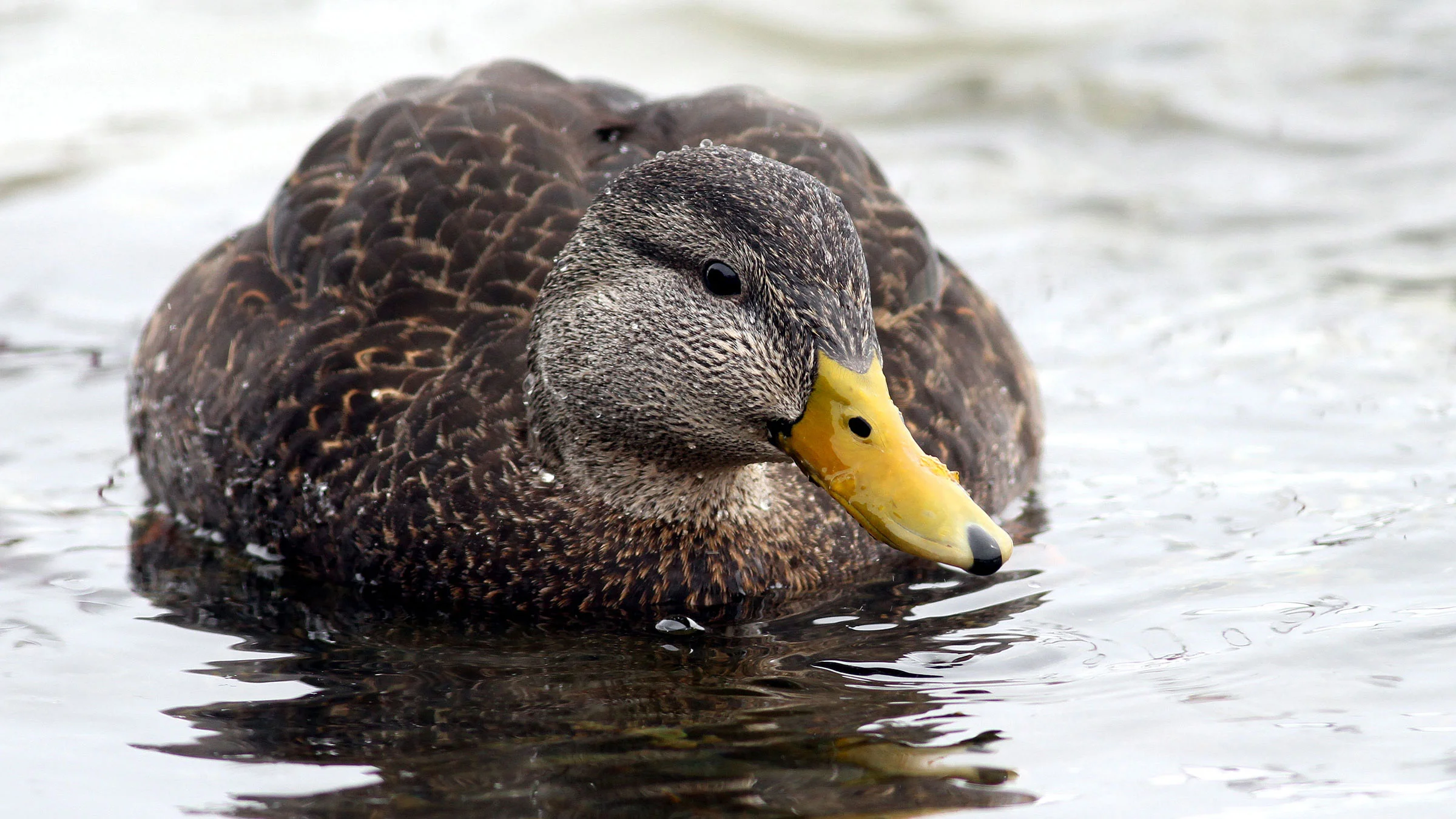
One of the most striking aspects of the American Black Duck is its adaptability. While they primarily thrive in freshwater habitats such as shallow lakes and marshes, they also migrate towards saltwater coastal areas, showcasing their resilience in finding optimal living conditions. In addition to this versatility, these ducks are integral components of their ecosystems. As dabbling birds, they contribute to the ecological balance by foraging for aquatic plants and insects, helping to maintain the overall health of wetland habitats. This foraging behavior not only impacts the vegetation in their environment but also plays a role in shaping the habitat for other wildlife species.
Their conservation status, history of cultural significance, and ongoing challenges faced in their natural habitats highlight their role as ambassadors for broader environmental conservation efforts. Understanding the habits, diets, and breeding behaviors of the American Black Duck is essential for appreciating the full scope of their ecological significance and the ongoing efforts needed to ensure their survival. This article delves into various aspects of the American Black Duck, including its habitat preferences, feeding habits, reproductive behaviors, and the multifaceted relationships it shares with human culture and biodiversity.
Habitat and distribution of Black Duck
The habitat and distribution of the American Black Duck (Anas rubripes) illustrate the delicate balance they maintain within diverse ecosystems. Much like dancers gliding across a stage, these ducks inhabit a range of environments that support their unique lifestyle. From the shimmering surfaces of serene freshwater wetlands to the brisk coastal salt marshes, the black duck’s adaptability earns it a prominent role in wetland ecology.
Their geographic range predominantly spans northeastern North America, where they breed in a variety of water-rich areas including beaver ponds, shallow lakes, and marshes. In the colder months, these ducks migrate to coastal regions, demonstrating remarkable resilience as they seek sustenance in brackish waters and agricultural fields. This seasonal shift in habitat is akin to a beautifully orchestrated migration, where timing and instinct guide them toward optimal feeding and breeding grounds.
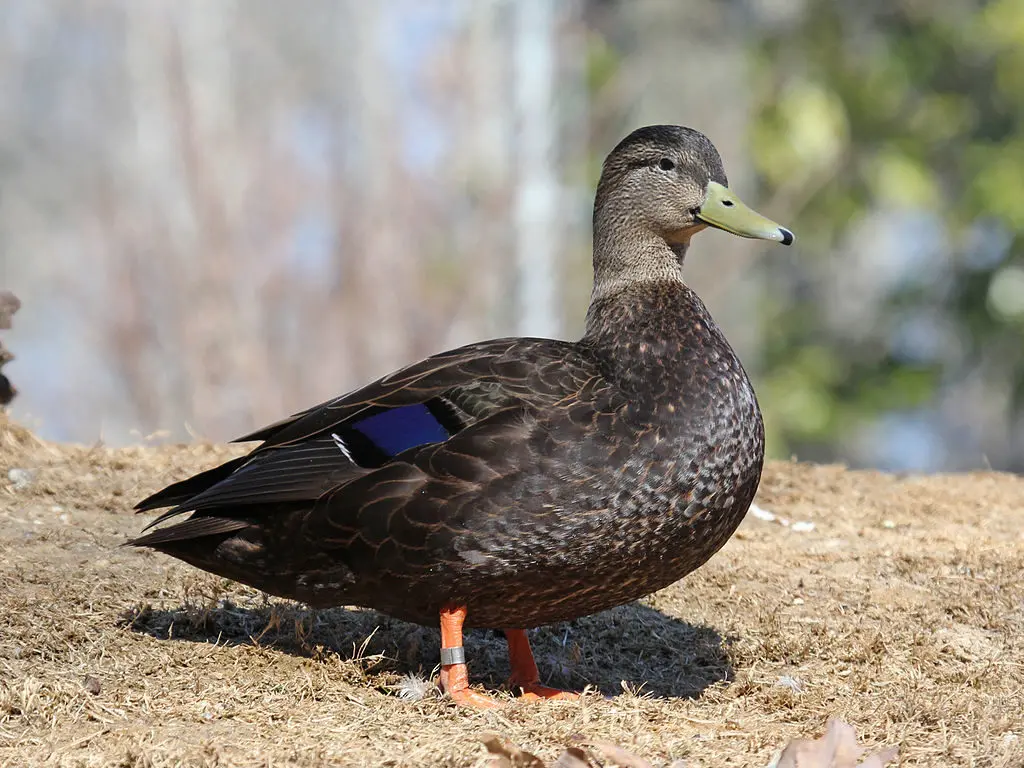
Interestingly, American Black Ducks have faced significant population pressures over the last century due to habitat loss and the encroachment of more adaptable species like the Mallard. Their preference for less disturbed areas underscores the importance of conserving natural wetlands and implementing protective measures to maintain the delicate balance of these ecosystems. It is crucial to appreciate how the habitat and distribution of black ducks profoundly influence their overall population dynamics, and their conservation efforts reflect a broader commitment to safeguarding the health of our wetland environments.
Geographic range of Black Duck
The geographic range of the American Black Duck (Anas rubripes) begins in the heart of northeastern North America and extends through a series of diverse biomes that support their breeding and migratory lifestyle. Specifically, these ducks predominantly inhabit regions in Canada, including southern Ontario and Quebec, before migrating south into the United States during the winter months.
A prime characteristic of their geographic range is its fluidity, reflecting their dependence on seasonal changes in habitat. Breeding occurs in lush freshwater wetlands characterized by shallow lakes, marshes, and wooded swamps during spring and summer. Over time, as autumn arrives, black ducks migrate south, searching for coastal salt marshes, flooded timber areas, and agricultural landscapes. This migration process can be likened to an intricate dance of timing and instinct, where each movement aligns with the resources available at various points throughout the year.
Comparing the patterns of black ducks to other dabbling ducks, their adaptability shines. Unlike the Mallard, which is found in diverse habitats, American Black Ducks have more specific habitat preferences leading them to rely on less disturbed wetlands. Their reliance on these specific environments sheds light on the fragility of their populations, which have come under threat due to human-driven habitat changes.
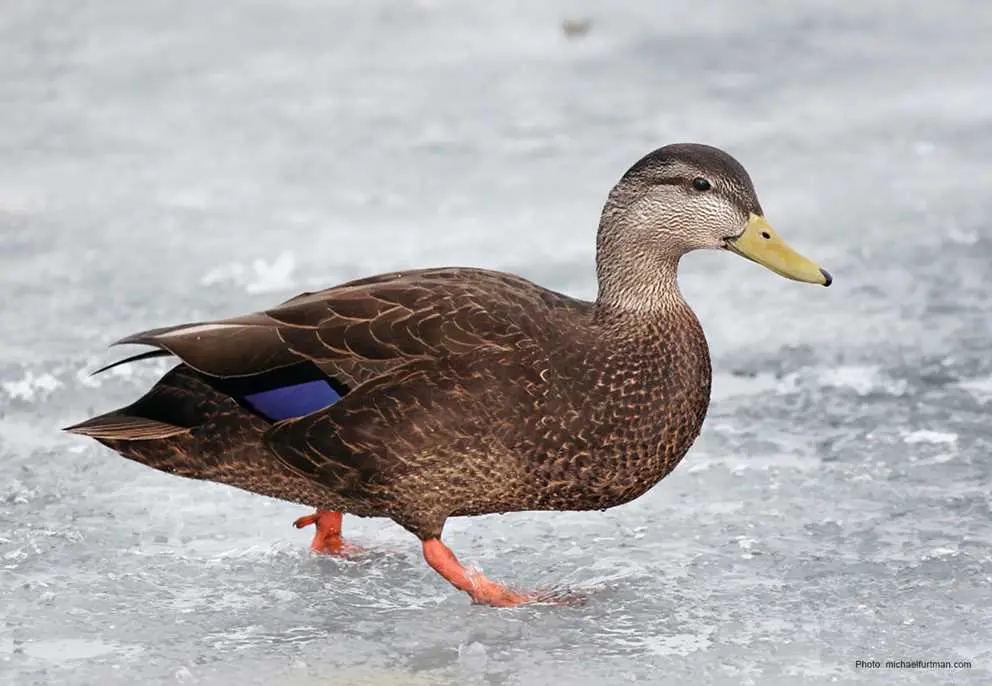
As we analyze the geographic range of American Black Ducks, it is imperative to recognize the factors affecting their migratory routes. From climate change to urban development, numerous challenges confront these birds as they navigate the complexities of their ecosystems. Consequently, conservation initiatives play a special role in understanding and protecting the ecological landscape that sustains these unique ducks, ensuring future generations can appreciate their presence in the wild.
Preferred habitats and nesting sites
The preferred habitats and nesting sites of the American Black Duck are integral to their survival and reproductive success. These ducks exhibit a profound association with freshwater wetlands, where they have evolved to thrive in specific ecological niches. The intricate relationship between these ducks and their habitats showcases the nuanced beauty of wetland ecosystems, where each layer of the environment serves a purpose in supporting life.
American Black Ducks often nest in secluded locations, carefully selecting sites to avoid predators. Their choices reflect a keen understanding of their environment nesting near water bodies, grassy islands, and dense vegetation that offers shelter. These nests, often built on the ground, consist of materials such as grasses, twigs, and feathers, forming a cozy yet secure space for laying eggs. Just as a craftsman meticulously selects each tool for his trade, these ducks exhibit thoughtful selection processes in establishing their nesting sites.
In winter, the black ducks seek out a variety of habitats, including coastal estuaries and flooded timber, where they can easily adapt to changing environmental conditions. Their ability to transition between ecosystems demonstrates the resilience of the species, allowing them to exploit a range of resources. Through this adaptability, they exemplify the delicate interdependence between nature and the choices made by wildlife, reminding us of the importance of conserving these habitats.
The connection between black ducks and their nesting preferences is further impacted by conservation efforts aimed at preserving wetland ecosystems. Human activities, such as agriculture and urban development, threaten these crucial habitats and limit the available nesting sites. Thus, safeguarding and restoring accessible wetlands is crucial, as it directly supports the breeding success and long-term population stability of these remarkable birds.
Diet and feeding habits
The diet of the American Black Duck (Anas rubripes) exemplifies its adaptability and resourcefulness in varied wetland environments. Much like a chef looking to create the perfect dish, black ducks capitalize on the ingredients available in their surroundings, showcasing an omnivorous diet that shifts with the seasons and habitat types. Their dietary habits not only support their own survival but also play a vital role in maintaining the health of the ecosystems they inhabit.
Black ducks primarily consume aquatic plants, seeds, roots, and tubers, alongside a significant proportion of insects and invertebrates. During the breeding season, their diet is rich in protein sources, such as insects, which meet the nutritional demands of nurturing ducklings. When conditions allow, they may also pursue crustaceans, mollusks, and small fish, demonstrating their versatility in foraging.
During feeding, American Black Ducks exhibit a distinctive foraging technique known as dabbling, a behavior characterized by tipping their bodies to reach submerged food without diving completely. This feeding method mirrors a child reaching into a vibrant pond filled with hidden treasures; the ducks glide over the water’s surface, head submerged, and soon pop back up satisfied. They also employ grazing techniques on land when foraging along shorelines and in agricultural fields, seeking seeds and vegetation.
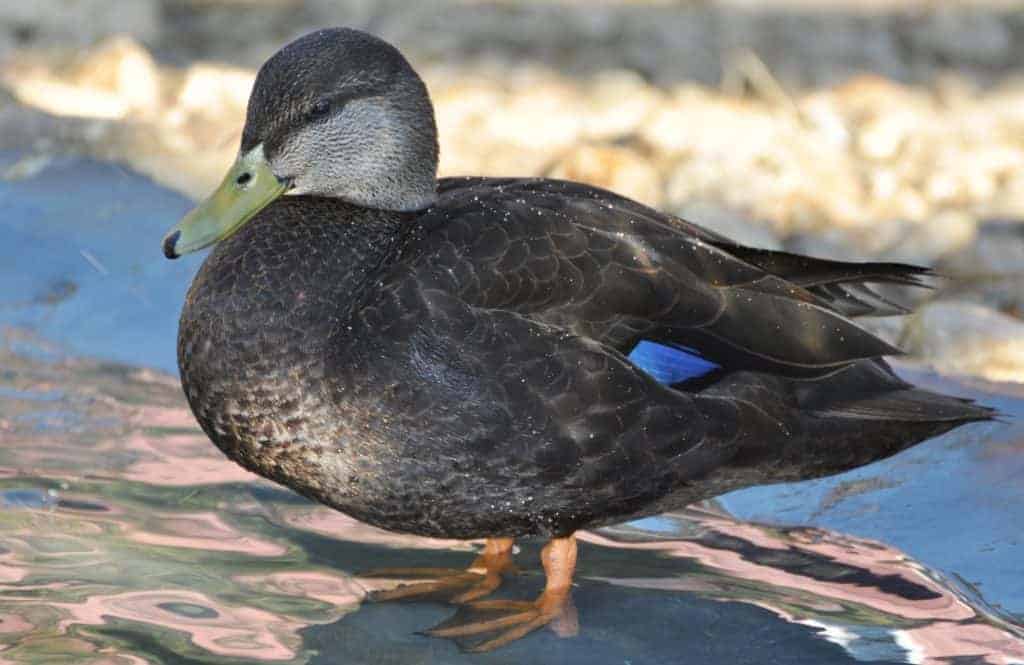
Understanding the dietary preferences of black ducks not only reveals meaningful insights into their lifestyle but also serves as a reminder of the interconnected web of ecosystems. As they forage, these ducks contribute to the growth of vascular plants and maintain the balance within their habitats. Their eating habits highlight the delicate interplay between species and their environments, underscoring a shared responsibility to protect the nutritional web that sustains these remarkable waterfowl.
Primary food sources for Black Duck
The primary food sources of the American Black Duck are as varied as the rich tapestry of their wetland habitats. These ducks thrive on an omnivorous diet that allows them to capitalize on seasonal resources, adapting their feeding techniques to whatever sustenance the landscape provides. An overview of their dietary preferences reveals how deeply entwined they are with the ecosystems they inhabit.
Key food sources:
- Plant Materials:
- Aquatic plants such as eelgrass, pondweed, and smartweed serve as staples in the black duck’s diet. These plants provide essential nutrients and energy, supporting both adult birds and their ducklings.
- Seeds from wetland grasses and various terrestrial plants also contribute to their nutritional intake.
- Animal Matter:
- Insects and other invertebrates, including snails and shellfish, are vital sources of protein, particularly during the breeding season when nutritional demands peak.
- Young ducklings shift from consuming primarily animal matter, rich in protein, to more fibrous plant materials as they mature.
Feeding Techniques:
- Dabbling:
- American Black Ducks excel in dabbling, wherein they tilt forward and submerge their heads to access vegetation and invertebrates found just beneath the water’s surface. This method allows them to efficiently exploit food resources while minimizing energy expenditure.
- Grazing:
- In addition to dabbling, they engage in grazing foraging behaviors on land, where they use their strong bills to pluck seeds, roots, and grasses from the ground.
Seasonal Variation:
- Throughout the year, the availability of food sources influences the black duck’s diet. During winter weeks, temperature drops and water freezes may limit access to aquatic vegetation, pushing them to forage in fields or more sheltered areas for sustenance.
These feeding habits and dietary preferences of the American Black Duck underscore the intricate balance that exists between predator and prey, as their foraging behaviors contribute to maintaining the health and diversity of their wetland environments. Protecting these habitats ensures ongoing access to the vital resources they rely upon for survival.
Foraging techniques and behavioral patterns
The foraging techniques and behavioral patterns displayed by the American Black Duck (Anas rubripes) highlight their adaptability and resilience as they navigate complex wetland ecosystems. These ducks exhibit behaviors shaped by necessity and instinct, forming the foundation of their feeding habits and social interactions within their environments.
The primary method of feeding employed by black ducks is dabbling an energy-efficient technique where they tilt their bodies forward, submerging their heads to access food while remaining partially afloat. This technique is akin to a skilled dancer flowing gracefully over a stage; they swoop in and out of the water, effortlessly scavenging for submerged plants and invertebrates. Their bodies are uniquely designed to facilitate this foraging style, as their broad bills allow for easy access to food sources while minimizing disturbance to the habitat.
In addition to dabbling, black ducks can employ a grazing strategy on land where they search for seeds, roots, and tubers. This behavior often occurs in agricultural fields, where food is abundantly available. As they forage, groups of black ducks often communicate with one another through soft quacking sounds, much like friends chatting over a meal. This social aspect of their feeding behavior not only strengthens group cohesion but also aids in spotting potential threats in their environment.
Regarding their activity patterns, American Black Ducks are primarily diurnal; they tend to forage during daylight hours. In the early morning, they can often be seen moving through their habitats, exhibiting a sense of urgency as they gather food before the day’s heat sets in. Their social structure is quite dynamic, with individual ducks frequently interacting in small, mixed flocks, further reflecting their gregarious nature.
These foraging techniques and behavioral patterns showcase the intricate interplay of instinct and adaptation in the American Black Duck’s life. By leveraging their surroundings and forming social bonds, these ducks successfully navigate the challenges of their environments while contributing to the balance of their ecosystems.
Breeding and reproductive behavior
Breeding and reproductive behavior in the American Black Duck (Anas rubripes) is a fascinating aspect of their life cycle that demonstrates the complexity of their social structures and the adaptability of the species. Black ducks engage in elaborate mating rituals and processes that are crucial for successful reproduction, ensuring that their populations can thrive in the wild.
During the breeding season, male black ducks participate in various courtship displays designed to attract females. These displays include vocalizations, head bobbing, and physical posturing, where males establish dominance and convey their health and genetic fitness to potential mates. Just as performers vie for the attention of an audience, the males exhibit these behaviors to convince females that they are suitable partners a vital step in forming strong pair bonds.
Once pairs are formed, females typically select nesting sites close to water bodies, where safety and food resources converge. Their nesting materials often include grasses and feathers, which they carefully arrange to create a secure environment for their eggs. A female will usually lay a clutch consisting of 6 to 12 eggs, which she then incubates for around 28 days. This incubation period is a delicate time for the eggs, as they require consistent warmth and protection from predators.
After hatching, ducklings are precocial, meaning they are well-developed and ready to leave the nest within hours. The female guides them to water where they begin foraging for food. This maternal instinct is crucial during the vulnerable early days of the ducklings’ lives, as they rely on their mother’s knowledge of the environment to find sustenance and avoid danger.
Understanding the breeding and reproductive behaviors of American Black Ducks is essential for conserving their populations. With threats like habitat loss and competition from other species looming, creating and maintaining stable environments for nesting and feeding is pivotal in supporting the future of these beautiful birds.
Mating rituals and courtship displays
Mating rituals and courtship displays of the American Black Duck (Anas rubripes) are not only a spectacle of natural behavior but also essential components in the survival of the species. More than mere rituals, these displays serve to establish the genetic fitness of the potential mates and facilitate pair bonding the cornerstone of their reproduction.
During the courtship season, which typically coincides with the onset of breeding, male black ducks engage in a variety of visual displays designed to attract females. These rituals often include head bobbing, which involves the male moving his head up and down rhythmically, accompanied by soft vocalizations. This interplay of movement and sound serves as a form of communication, with the male proudly showcasing his strength and vitality, much like a dancer passionately expressing emotions through movement.
Physical appearance plays a vital role in these courtship displays. Bright coloration, particularly in the male’s plumage, coupled with confident behaviors, contributes to their overall appeal to females. The vibrant hues of their feathers reflect genetic health, and the females instinctively prefer those with more vibrant and healthy appearances. This selection process embodies the principle of natural selection, where traits that contribute to reproductive success are passed down through generations.
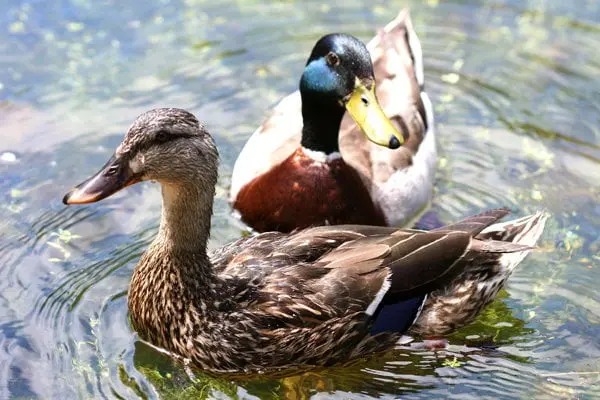
Once a bond is established, the couple often becomes inseparable during the breeding season, with both partners involved in locating and building nests. The black ducks exemplify strong pair bonds, often reuniting each breeding season, akin to lovers who return to familiar places for warmth and safety.
In summary, the mating rituals and courtship displays of American Black Ducks present a captivating tapestry of behaviors that reflect a delicate balance between survival and reproduction. Recognizing the significance of these behaviors enhances our understanding of their life cycles and underscores the necessity of preserving their habitats to ensure future breeding successes.
Nesting and incubation practices
Nesting and incubation practices of the American Black Duck are critical elements of their reproductive strategy, showcasing the duck’s adaptability and focus on survival. The female’s meticulous choice of nesting site and adherence to specific incubation behaviors reflect the importance of maintaining a secure environment for her offspring.
To begin, females select concealed nesting sites often located near water, which provides an essential resource for both the mother and her ducklings. Found in thick vegetation be it in wooded areas, marshes, or even agricultural fields the nests are crafted with a blend of natural materials including grasses, leaves, and feathers. Nest construction is a highly intentional process, much like an artist carefully selecting and arranging each element to create a canvas. The female creates a depression in the ground to accommodate her clutch of eggs, ensuring it remains hidden from predators.
Once the nest is established, the female lays a clutch that typically consists of 6 to 12 eggs. The incubation period lasts approximately 28 days, during which the female remains primarily responsible for keeping the eggs warm. This level of dedication is similar to a guardian vigilantly watching over a treasure; the mother’s unwavering attention plays a leading role in the survival of the next generation. During this time, males often remain nearby, providing protection while allowing the female to focus on incubating.
As the incubation period draws to a close, the ducklings hatch, emerging from their eggs with downy feathers and instinctively ready to follow their mother to the water. This swift transition from nesting to foraging highlights the unique adaptations of the species, where the young are quickly introduced to their aquatic environment, maximizing their chances of survival.
In essence, the nesting and incubation practices of the American Black Duck illustrate the interconnectedness of behavior and biology. With an acute awareness of environmental needs and risks, these ducks have developed strategies that enhance their reproductive success, ensuring their populations can persist in the face of ecological challenges.
Conservation status and threats
The conservation status of the American Black Duck (Anas rubripes) reflects the delicate balance between habitat preservation and the challenges imposed by human activity. Various conservation organizations have classified the species as “Least Concern,” indicating that they do not currently face imminent extinction. However, their populations have experienced significant fluctuations, raising concerns that merit attention and ongoing efforts to ensure their future survival.
One of the primary threats to American Black Ducks is habitat loss. The expansion of urban areas, agriculture, and industrial activities has drastically altered natural wetland environments, diminishing the available spaces for breeding and feeding. Much like a city invading a forest, these developments encroach upon the delicate ecosystems vital for the black duck’s life cycle. Wetland drainage has exacerbated these issues, leading to fragmentation of suitable habitats.
Additionally, competition with the more adaptable Mallard (Anas platyrhynchos) presents a challenge. Over time, hybridization has become problematic, with studies showing a concerning percentage of black duck populations exhibiting genetic influences from mallards. This dilution of genetic integrity can result in reduced reproductive success and increased vulnerability to environmental stressors.
Pollution and climate change further compound the threats faced by American Black Ducks. Access to clean water is critical for their survival, as chemical runoff and waste products can compromise their habitat quality. Climate change, too, alters the timing of migrations and breeding patterns, placing additional pressure on duck populations. As environmental conditions shift, the availability of food and nest sites will likely fluctuate, forcing ducks to adapt to new circumstances.
In summary, while the American Black Duck has a current conservation status of “Least Concern,” numerous threats impact their populations, necessitating increased conservation efforts. The protection of wetland habitats, responsible land-use practices, and continued monitoring of populations are paramount in ensuring these remarkable ducks continue to thrive in their natural environments.
Current population trends of Black Duck
Current population trends for the American Black Duck (Anas rubripes) indicate an intricate relationship between environmental factors and conservation efforts. Over recent decades, surveys have shown variable population numbers, with significant fluctuations influenced by habitat conditions and competition with other species. This context underscores the importance of tracking population changes to ensure sustainable management.
Recent data suggest a slow but hopeful trend, with estimates indicating a slight increase in the American Black Duck population by about 8 percent from 2022 to 2023. This rebound brings the numbers closer to their long-term averages. However, it is essential to contextualize this increase in light of historical declines in certain regions, specifically southern Canada and the northeastern United States, where black ducks have faced increased pressures due mainly to habitat loss and competition with more resilient breeds like the nearby Mallard.
Population dynamics are complex and influenced by various factors, including climate changes and human activities that alter habitats over time. As these migratory birds seek food and breeding sites, shifting temperatures and unpredictable weather patterns will likely impact their movement. Consequently, the demand for stable wetland environments will become critical in sustaining healthy populations.
The conservation efforts and regulations aimed at protecting American Black Ducks have played an essential role in stabilizing their populations. The implementation of hunting restrictions in the late 20th century, for example, has helped alleviate some pressures. Nevertheless, ongoing challenges remain evident, emphasizing the need for dedicated conservation initiatives to track population health and habitat conditions closely.
Overall, while recent increases in American Black Duck populations signal positive momentum, the ongoing observation of current trends is vital for ensuring the long-term viability of these waterfowl. Their future depends upon all stakeholders working together to safeguard the critical ecosystems they inhabit.
Major threats to Black Duck habitats
The American Black Duck (Anas rubripes) faces numerous threats to its habitats that challenge its survival and put pressure on ongoing conservation measures. Habitat degradation represents a significant obstacle, as urbanization and agricultural expansion continue to encroach upon natural wetlands, reducing the availability of essential breeding and feeding grounds.
Human activities have resulted in the drainage of critical wetland ecosystems, which serve as the primary habitat for black ducks. This loss of habitat can be likened to a once thriving marketplace being overshadowed by towering structures, causing the vibrant community to shrink. Once rich ecosystems, teeming with diverse plants and wildlife, are lost to urban sprawl, agricultural fields, and industrial development thus limiting the conditions necessary for black ducks to thrive.
Additionally, the proliferation of invasive species poses a threat to the habitat quality that black ducks rely upon. Invasive plant species can outcompete native vegetation for resources, causing imbalances that affect the food supply for these ducks and their ability to nest successfully. These invasions can alter the ecological landscape much like a choking vine overgrowing a fence, suffocating native plants that once thrived alongside them.
Hybridization with the more adaptable Mallard duck further complicates conservation efforts. As their ranges overlap, American Black Ducks may interbreed with Mallards, leading to a dilution of the distinct genetic characteristics of the black duck populations. This hybridization can reduce their reproductive success and complicate conservation strategies aimed at preserving the genetic integrity of the species.
Addressing these threats to black duck habitats requires concerted efforts from conservation organizations, policymakers, and local communities. Initiatives to restore wetland ecosystems, regulate land use, and mitigate the effects of invasive species will be essential for safeguarding the habitats that support the American Black Duck and other species dependent on these vital resources.
Black Duck vs. other duck species
The American Black Duck (Anas rubripes) is renowned for its distinct characteristics, yet it often finds itself compared to other duck species, particularly the Mallard (Anas platyrhynchos). Understanding the differences between black ducks and their close relatives underscores the uniqueness of each species and highlights the importance of preserving their individual ecological roles.
One of the most noticeable distinctions is their physical appearance. Male Mallards are easily identified by their vibrant green heads, while male black ducks present a more understated, darker brown plumage. Female American Black Ducks share similarities with female Mallards, but they lack the distinctive orange bill and are typically darker overall. In this regard, black ducks may seem like shadowy figures inhabiting the same stage, blending into the background while their more colorful counterparts steal the show.
Behaviorally, both species share traits as dabbling ducks, feeding primarily on aquatic plants and insects. However, American Black Ducks are known to be more comfortable in heavily vegetated environments, where they can blend into their surroundings much like an artist masterfully camouflaging their work on a vibrant canvas. Mallards, on the other hand, exhibit a broader range of adaptability, often thriving in urban parks and man-made ponds.
Habitat preferences further distinguish the two species. While American Black Ducks favor freshwater wetlands, swamps, and coastal marshes, Mallards inhabit a wider variety of environments, showcasing their flexibility in resource acquisition. This discrepancy reflects the black duck’s reliance on specific ecological conditions, calling attention to the conservation efforts necessary to maintain these habitats.
Monitoring population trends is crucial in understanding the dynamics between these closely related species. The American Black Duck has faced pressures from habitat loss and competition with the more adaptive Mallard, necessitating targeted conservation efforts to ensure the survival of the former. By appreciating and comparing these nuances, we gain insights not only into the life of the American Black Duck but also into the broader health of the ecosystems they inhabit.
Differences between black ducks and mallards
Differentiating between the American Black Duck (Anas rubripes) and the Mallard (Anas platyrhynchos) can often confuse casual bird watchers due to their strikingly similar appearances. However, a closer examination reveals several key differences between these two duck species that serve as valuable identifiers and contribute to their unique ecological roles.
1. Physical Characteristics:
- Plumage: Male Mallards shine with their vibrant green heads, contrasted by a distinctive yellow bill. In contrast, male Black Ducks exhibit muted, darker brown plumage with a less pronounced bill, often appearing olive or greenish-yellow. The female Mallard has a characteristic mottled brown appearance with an orange and black-spotted bill, while the female Black Duck is darker overall, possessing a more subtle appearance.
- Size and Build: Generally, American Black Ducks are slightly larger and bulkier compared to Mallards. Their rounded heads and broader bodies present a more robust silhouette when contrasted with the streamlined form of the Mallard.
2. Habitat and Behavior:
- Preferred Habitats: Black Ducks favor freshwater habitats, including wooded wetlands and coastal marshes. In contrast, the Mallard is highly adaptable, frequently found in urban parks, ponds, and a variety of habitats ranging from freshwater to brackish environments.
- Feeding Strategies: Both species are dabbling ducks, engaging in similar feeding habits. However, Black Ducks are often observed foraging in heavily vegetated areas, skillfully navigating through dense plant life, while Mallards may forage more broadly across open water.
3. Social Behavior:
- Courtship Displays: Mallards are known for their elaborate courtship displays involving synchronized swimming and vocalizations, highlighting their more flamboyant social interactions. Black Ducks have subtler courtship behaviors but still demonstrate a strong pair bonding with less emphasis on elaborate displays.
- Hybridization Risks: As a result of overlapping ranges, the two species often hybridize. Genetic studies suggest that a portion of Black Duck populations exhibit Mallard traits a concern for maintaining the genetic integrity of the species.
Understanding these differences informs effective conservation strategies and highlights the distinctive ecological contributions each species makes. While they may navigate similar environments, distinguishing between the American Black Duck and the Mallard enriches our appreciation for both species and their roles in maintaining balanced ecosystems.
Identifying characteristics of black ducks
Identifying the American Black Duck (Anas rubripes) amidst the diverse array of waterfowl requires a keen eye for detail. Sharing similarities with other species such as the Mallard, black ducks possess unique characteristics that allow enthusiasts to spot them in their preferred habitats.
1. Plumage:
- Black ducks exhibit dark, chocolate-brown bodies with subtly lighter chestnut underparts, creating an elegance that sets them apart. In contrast, female Mallards are generally paler and marked by distinctive orange bills. This darker plumage enables black ducks to blend seamlessly into their natural surroundings, sharpening their ability to avoid detection by potential predators.
2. Bill Color:
- The bill of the American Black Duck is notably yellow-olive, a distinctive feature that contrasts with the bright orange bill of the female Mallard. This yellowish bill, often lacking the pronounced markings of its Mallard counterpart, signifies the duck’s genetic identity.
3. Flight Characteristics:
- When in flight, black ducks present bright white underwings that contrast with their darker bodies, easily distinguishing them from their relatives. Their secondaries (speculum feathers) are iridescent purple, lacking the characteristic white borders present in Mallards, making it easier to identify them from a distance.
4. Size and Shape:
- While both species are generally similar in size, black ducks tend to have a bulkier appearance and rounder heads, giving them a recognizable silhouette. This physical size can also be pivotal in identifying them when observed alongside slimmer ducks like the Mallard.
5. Behavioral Traits:
- Black ducks and Mallards are both dabbling ducks, known for feeding by tipping forward in shallow waters. However, black ducks often forage in more secluded areas and remain in mixed flocks, coursing through aquatic vegetation that enhances their stealth.
In combination, these identifying characteristics paint a vivid picture of the American Black Duck, culminating in a compelling visual narrative that invites keen observers to deepen their appreciation for this unique waterfowl species.
Cultural significance of black ducks
The American Black Duck (Anas rubripes) holds a special place in various cultural contexts, revealing its significance beyond mere physical presence. Representing themes of resilience and adaptation, these ducks feature prominently in local folklore as well as artistic and culinary representations, making them important symbols in human narratives.
The symbolism of the black duck is particularly resonant with Native American cultures, where it often embodies lessons about perseverance and balance within nature. Various tribes hold beliefs surrounding black ducks, seeing them as messengers or symbols of transformation. Much like an ancient story retold through generations, the presence of black ducks in these narratives reminds us of the deep connections we share with wildlife.
In artistic arenas, black ducks are subjects of numerous paintings, sculptures, and literature. Their graceful movements and dark plumage often inspire artists, allowing for creative exploration of themes related to nature and the human experience. These representations echo a sense of mystique, inviting observers to see beneath the surface and appreciate the intimate relationship that exists between humans and wildlife.
Additionally, black ducks have woven themselves into local culinary traditions through hunting practices, where they contribute to regional cuisines and food cultures. Culinary depictions of black duck prepared in various styles bring communities together, intertwining the act of gathering with environmental conservation efforts.
Thus, the cultural significance of the American Black Duck extends beyond its physical attributes. These ducks act as powerful symbols bridging the gap between humanity and nature, reminding us of the ongoing relationship we share with wildlife and the environments that sustain life.
Representation in art and literature
The representation of the American Black Duck (Anas rubripes) in art and literature captures its essence, forging connections between the natural world and human experience. Artists and writers often draw inspiration from the sleek forms and captivating movements of these ducks, utilizing them as symbols of resilience, adaptability, and harmony with nature.
In various artworks, black ducks are portrayed gracing tranquil waters, embodying a serene coexistence within their wetland habitats. Artists often utilize the contrast between the ducks’ darker plumage and the vibrant colors of their surroundings to evoke emotion and create depth in their compositions. The elegance displayed in these artistic renderings invites viewers to contemplate the beauty of the natural world.
Literature, too, has embraced the presence of the American Black Duck, weaving its story into narratives that highlight themes of survival and environmental awareness. Many authors feature these ducks as metaphors for adaptability amid a changing landscape, much like characters in a story who must adjust their paths in unpredictable environments. These literary portrayals evoke empathy, reminding readers of the intricate connections between all living beings.
Moreover, the symbolism of the black duck extends into folklore, where it may represent transformation and the balance between humanity and nature. Such narratives often emphasize the reverence toward the environment, fostering a deeper understanding of wildlife conservation efforts among readers and audiences.
Overall, the representation of the American Black Duck in art, literature, and folklore enriches our understanding of this species and deepens our appreciation for the biodiversity that shapes our world. These creative expressions transcend cultural boundaries, serving as platforms for dialogue surrounding the importance of wildlife conservation and our shared responsibility to protect precious natural resources.
Black ducks in local folklore and traditions
The American Black Duck (Anas rubripes) occupies a significant space in local folklore and traditions, offering insights into the intricate relationship between humanity and nature. Often portrayed as symbols of resilience, adaptability, and transformation, these ducks feature prominently in numerous cultural narratives, reflecting the values and beliefs of diverse communities.
In many Indigenous traditions, black ducks are revered as spiritual totems, embodying messages from the natural world. Tales often depict these birds as guides, imparting wisdom about balance within ecosystems and the importance of honoring the interconnectedness of life. Much like ancient stories passed down through generations, these narratives instill respect for the environment and promote conservation practices empowering communities to preserve their natural resources.
Additionally, black ducks often symbolize adaptation in local lore, illustrating how wildlife navigates challenges posed by changing environments. This is particularly relevant in regions facing threats from urbanization and pollution stories about black ducks adapting to new habitats resonate deeply within communities that experience similar transformations in their landscapes.
In culinary traditions, black ducks are frequently featured in regional dishes, where hunting practices bring people together to celebrate shared experiences. This blend of storytelling and gastronomy reflects a mutual respect for wildlife and the natural world. The preparation and enjoyment of black duck may represent community ties and appreciation for ecological bounty, reinforcing the age-old connection between local cultures and their environments.
In summary, the presence of black ducks in local folklore and traditions emphasizes the importance of understanding wildlife and valuing the ecosystems that sustain all life. These narratives foster a deeper appreciation for nature and underscore the need for ongoing conservation efforts to protect these magnificent birds and their habitats for future generations.
By educating ourselves about the cultural significance of the American Black Duck, we reinforce our commitment to preserving the delicate balance of the ecosystems they inhabit a vital pursuit in a world marked by rapid environmental change.
In conclusion, the American Black Duck is a remarkable species playing a vital role in the health of wetland ecosystems. Its habitat preferences, dietary needs, breeding behaviors, and cultural significance illustrate its adaptability and importance within the natural world. As we confront environmental challenges brought on by habitat loss and climate change, understanding and protecting the American Black Duck and its habitats becomes critical. Through conservation efforts and ongoing awareness, we can ensure that future generations continue to appreciate the beauty and ecological role of these remarkable waterfowl, emphasizing our shared responsibility in the stewardship of nature.





